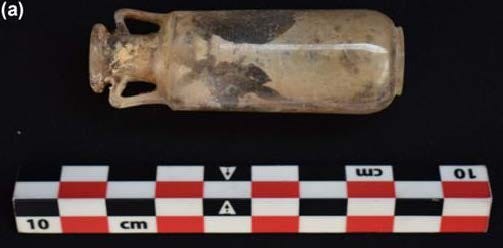From Cosano et al., 2023
For humans, the olfactory world is expansive. We can smell ourselves—body odors in all their variety—and we perceive signals evolved to appeal to us (and other mammals), such as the aroma of ripe fruits. We can eavesdrop on scent messages between members of other species. With the invention of cooking, we have unleashed an entirely new set of smells into the world: roasted notes, baked notes, fermented notes and more.
Amid this nostril-filling plenty, it is easy to forget that we also miss out on a lot. Just as our vision doesn’t include the ultraviolet, and our hearing doesn’t extend to ultrasonic frequencies, there are some molecules that we can’t detect by smell. (Carbon monoxide and methane, for example.) And then there are odors we could smell but don’t, because the source don’t produce enough to trigger our perception.
This last group is interesting. The world of subthreshold odors is probably vast: think of the billions of ants marking trails with scent at this very moment. But with technology, we can capture, concentrate, and identify all sorts of micro-scents. Technologies that extend our scent awareness over time and space are cool and compelling; unlike ChatGPT they add something to our lives. Here are a couple of recent examples.
Can you sex a fertilized chicken egg by smelling it? Apparently so, according to a new study. Why would you want to? Because we only eat pullets, not cockerels, so sexing chicks after they’ve hatched means a LOT of male chicks are culled. Our ever-more-squeamish moral superiors worry about this and think it would be more humane to cull them in ovo. Whatevs.
Back to egg sniffing. Breeders candle eggs to monitor development and optimize hatching rates, and trained “chick sexers” separate males from females by visual inspection of the cloaca. But no one has ever sniffed fertilized eggs to sex the embryo.
In recent years, it’s emerged that male and female eggs produce distinctive patterns of volatile organic compounds (VOCs). While an egg shell is porous, with vapors passing in and out of it, we are talking such tiny amounts of VOCs that they would be imperceptible to the human nose.
What’s needed is a non-invasive means of analyzing sex-dependent egg VOCs. And that’s what a research team at UC Davis has come up with. They modified an industry-standard egg handling method, namely silicone suction cups. They attached VOC-absorbing magnetic stir bars (Gerstel Twisters) to the inside of the suction cup, placed it on the egg, and pulled air from the egg for 2 minutes using a vacuum pump. The Twisters, now saturated with inside-the-egg volatiles, were then desorbed into a GC-MS for analysis. Based on the VOC profiles, the team could sex an egg with 80% success.
Neato!
Of course, a device that sucks on eggs for 2 minutes each isn’t ready for a high-speed production line. But don’t worry—the UC Davis team is already fabricating specialized chemical sensors that will do the job much more quickly.
So . . . what exactly are the sex-determining VOCs? They include some familiar compounds like ethyl butyrate, isobutyl acetate, 2-nonanol, and d-limonene (!). Also some weird stuff, like styrene, m/p xylene, and other benzene derivatives.
A second example involves the recovery of micro-scents from ancient artifacts. A research team in Spain examined an object recovered from a pristine tomb in the city of Carmona, dating from the first or second century A.D., when the area was the Roman province of Baetica. The object is an unguentarium, a small perfume bottle beautifully crafted from quartz crystal. Its stopper was made of dolomite, not the usual cork or wood, and sealed with bitumen (a tarry, petroleum pitch). Inside were the dry, crusty remains of a perfume.
Roman perfumes of that period consisted of a vegetable oil carrier, one or two essential oils, and sometimes a colorant. Back then essential oils were extracted not by distillation (not yet invented) but by cold soaking in olive or almond oil. The research team wanted to identify the essential oil in the bottle and thereby get a clue to what affluent Roman provincials in Spain smelled like at the time.
The team’s chemists deployed an array of sensitive analytic instruments and managed, with a fair degree of confidence, to identify the scent ingredient as a species of Pogostemon, i.e., patchouli. [Goddamn hippies!—Ed.] [C’mon man. I’ve said it before: the patchouli of Haight-Ashbury in the 60s was low-grade camel piss; a really refined patchouli smells sublime.]
That’s some nice sleuthing, and probably the first time the phrases “Fourier Transform Infrared Spectroscopy” and “Pliny the Elder” have occurred together in print.
Note to readers: Due to inflation, Amazon is about to raise the prices of paperback books it publishes, including my What the Nose Knows: The Science of Scent in Everyday Life. Order a copy before June 20, 2023 to avoid the bump!
Eva Borras, Ying Wang, Priyanka Shah, Kevin Bellido, Katherine L. Hamera, Robert A. Arlen, Mitchell M. McCartney, Kristy Portillo, Huaijun Zhou, Cristina E. Davis and Thomas H. Turpen. (2023) Active sampling of volatile chemicals for non-invasive classification of chicken eggs by sex early in incubation. PLoS ONE 18:e0285726.
Daniel Cosano, Juan Manuel Román, Fernando Lafont, José Rafael Ruiz Arrebola. (2023). Archaeometric identification of a perfume from Roman times. Heritage 6:4472.




Simone:
Good point. VR and AI distance us from our direct experience, and diminish its value. Sensory-enhancing technologies would do the opposite. That's something I'd be interested in trying; VR not so much.
Why we are putting all the eggs into Metaverse and AIs instead of creating devices for the nose or brain to amplify our sense of smell? Can we do that at all?